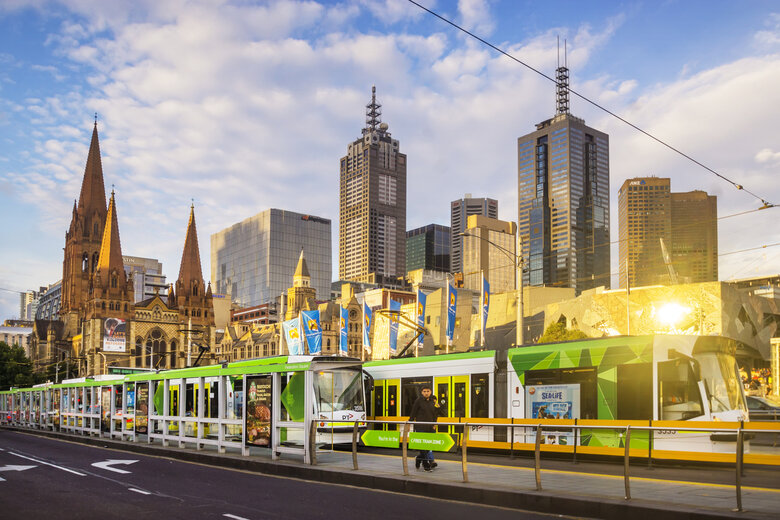
Apartment growth in in Melbourne is outstripping growth in public transport services, according to new research from RMIT.

A working paper published by the RMIT Centre for Urban Research says there’s a lot of talk about integrating high-density housing with public transport, but little action to actually measure how this is playing out.
The researchers found considerable growth in apartments over a 19-year period, but only a modest change in the number of public transport services provided.
There was an 88 per cent increase in apartments between 2004-2022, but only a five per cent increase in public transport within walking distance of them, the study found.
There was also ‘considerable variation’ across individual LGAs and public transport routes, with some areas getting a bigger increase in public transport services relative to growth, while others received less.
One-way mechanism
The report says while apartment development tends to occur in areas that are already well-serviced by public transport, there’s no evidence that public service levels are increasing in response to new developments.
“In the case of Melbourne, it appears that the policy intent to integration of transport and land-use provision is a one-way mechanism,” it says.
The researchers say the findings highlight two important policy messages: the need for constant tracking of public transport relative to apartment developments; and a need to address inequities between LGAs.
More needs to be done to better integrate transport and housing policies to improve the sustainability, productivity and liveability of our city.
Chris De Gruyter
Project lead Dr Chris De Gruyter, an RMIT Senior Research Fellow, says the figures highlight the need to include public transport in the planning process.
“Urban policy in the last few decades has shifted from suburban car-based development to encouraging more urban densification around public transport,” he said.
“We’re seeing all these new apartments being built along public transport routes but we’re not seeing services step up to match those new apartment developments.
“More needs to be done to better integrate transport and housing policies to improve the sustainability, productivity and liveability of our city.”
Lack of research
Research assistant Steve Pemberton says there’s a lack of research looking specifically at apartment growth compared to public transport in Melbourne.
But he says understanding variations between areas can shed light on the equity between public transport services and apartments.
“These findings can be used to influence councils and local governments to make decisions specific to their area,” he said.
“As far as we can see, there’s no pattern to why some areas have more frequent services than others.
“What we can say is public transport services are not consistently matching the growth of apartment housing.”
Planning strategy
Melbourne has seen significant growth in apartment housing along key public transport corridors in recent decades.
The Inner Melbourne region has grown from 265,000 to 427,000 people between 2001 to 2021, an increase of around 160 per cent.
Over the same period, the number of apartment dwellings in Inner Melbourne has increased from 55,000 to 122,000, around 220 per cent, and around two-thirds of all dwellings within Inner Melbourne are now apartments.
It comes as the state government’s metropolitan planning strategy, which aims to provide a 35-year blueprint for Melbourne as its population approaches 8 million, seeks to have up to 70 per cent of new housing in established areas.
View Dashboard here.
Comment below to have your say on this story.
If you have a news story or tip-off, get in touch at editorial@governmentnews.com.au.
Sign up to the Government News newsletter